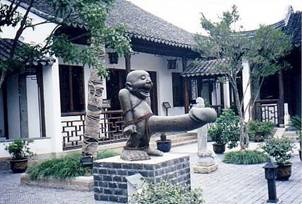
Tongli Sex Museum
Say one of your New Year's resolutions is to finally learn a bit more about China's rich past. Or perhaps you'd like to find some free entertainment more edifying than TV. In either case, 2009 is your year, the year China will complete its mission of making all museums and memorial halls as free as a packet of McDonald's ketchup.
Did we just say all? Sorry, some draws are too lucrative (and expensive) not to charge for tickets: Beijing's Palace Museum, the Xi'an Warriors, and their world-famous kind. But China has over 2300 museums. While many don't justify the rattly mini-bus hijinx involved in getting to them, others make the highlight reel of any good tour. Here are some of our recommendations.
Museum of Ancient Chinese Sex Culture, Tongli
In the sleepy hinterlands between Shanghai and Suzhou lies a trove of China's kinkiest relics. There is nothing prurient about this display of over 3,000 ancient sex aids and pornography. Still, that didn't stop local officials from running the museum's founder and curator, a man named Liu, off of his original site on Shanghai's Nanjing Road.
His new Tongli location comprises a sedate courtyard set-up that once served as a girl's school. The artifacts are arranged into thematic exhibitions: homosexuality, sexual positions, female repression, banned art. If not the ideal place to bring bored children, it's an easy sell to friends who otherwise claim to hate museums.
More info and directions here.
The Shanghai Museum
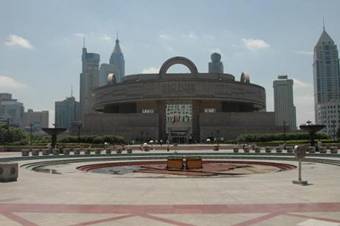
Like the Met, the Shanghai Museum building itself impresses as much as anything contained therein. Unlike the Met, no twenty bucks per adult and ten per kid stands between you and the exhibits. A blending of ancient form and ultra-modern function, the Shanghai Museum's architecture is enough to elevate the soul above its usual shopping mall or cramped apartment environs.
The collections do justice to their housing. 120,000 works of bronze, ceramic, jade, and calligraphy spread out over 38,000 square meters will require at least a few hours' cursory viewing, and easily half a day's perusal. Take a brief virtual tour here. That should be proof enough that the museum, like Shanghai itself, is committed to being as big and fancy as anything of its kind on the planet.
Wang Anting Xiaoxiao Zhanlanguan, Chengdu
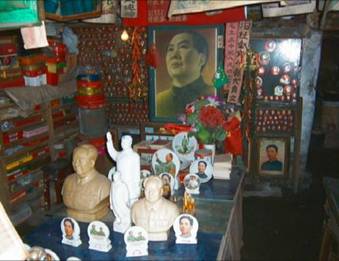
Not that a museum has to be extra-large or especially well-funded to be worth your while. Obsessions made real make great tourist destinations, and if you build it, they will come. Curator Wang Anting had over two tons of Mao memorabilia, collected over decades and boxed up in his attic. Then one night, Mao came to him in a dream, ordering him to share his bounty with the world.
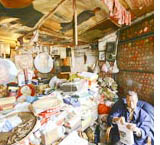 Today, in a tiny alley just west of Chengdu's main town square, Wang displays his life's work - over 57,000 pieces of Mao memorabilia: badges, buttons, posters, watches, magazines, enough to get a real taste of the Great Helmsman fever that boiled China's blood for more than three decades. Perfect for tourist trap rubes who can't stop giggling at the Mao alarm clocks and clicking the musical lighters. And Wang's passion makes his museum more compelling than the official home of the Chairman in Shaoshan.
Today, in a tiny alley just west of Chengdu's main town square, Wang displays his life's work - over 57,000 pieces of Mao memorabilia: badges, buttons, posters, watches, magazines, enough to get a real taste of the Great Helmsman fever that boiled China's blood for more than three decades. Perfect for tourist trap rubes who can't stop giggling at the Mao alarm clocks and clicking the musical lighters. And Wang's passion makes his museum more compelling than the official home of the Chairman in Shaoshan.
Address: 23 Wufu Jie, Chengdu
Sanxingdui Museum, Chengdu
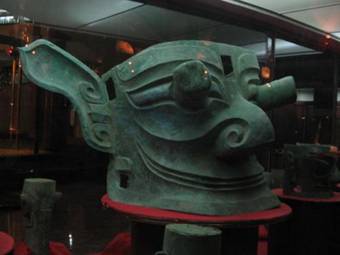
After realizing there's more memorabilia for Mao than there is for Star Wars, you may as well balance things out with a visit to the Sanxingdui Museum. One of the 20th century's most significant archeological discoveries, the two sacrificial pits unearthed in 1986 reveal that China's roots spread deep into the earth, through hundreds of long-lost veins.
The pits were filled with elephant tusks, jade tablets, and gold masks of a bird-man fashion entirely unrelated to any other Chinese artistic tradition. The relics, as well as other structures of the Sanxingdui since found, have archeologists in a tizzy over whether their creators were an offshoot of the ancient Shu people or a separate tribe. Their lack of written records ensures long-lasting debate, but the quality of their pre-historic work commands admiration. More info from the museum site here.
The Confucius Temple and Family Seat, Qufu, Shandong
China is fairly overrun with Confucian temples, but Qufu city is where it all began. In 478 BCE, two years after Kongzi went on to his reward, disciple Liu Aigong turned the master's home into a temple. Successive generations have conducted honorific rituals there ever since, making it the source of Confucius worship.
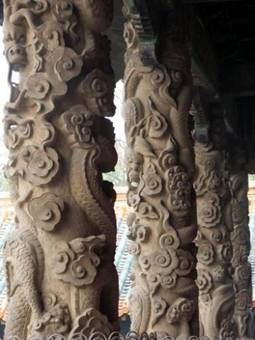
Virtually every Chinese emperor had a crack at remodeling and renovating the temple, so that today it is a labyrinthine display of Imperial style. 466 rooms, countless halls and pavilions cover almost a square kilometer, whose highlight is Dacheng Hall, resting on twenty eight coiled serpent columns. To the east are another 240 mu of matchless living history, the restored private home of the Sage's descendants. Rare paintings, calligraphy, and Ming scrolls add even more cultural cred to the place. Haven't been yet? Don't worry; as Confucius says, "Be not ashamed of mistakes, and thus make them crimes."
Phone: 86 - 537 - 448 - 6500
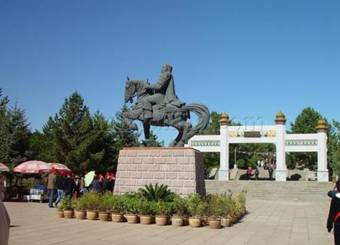
You might have figured the rampaging Temujin left behind little but arrow heads, bows, and the bones of his enemies. Well, he used swords, spears, and battle-axes, too, even a primitive copper gun. All such weaponry and more are on display in remote Xilingol, determined to be the cultural hub of Inner Mongolia, and making a start of it with the museum.
Not that a conquering Mongol just slept under his horse after a hard day's slaughter. Silk and felt carpets, as well as precious metal artifacts round out the museum's martial artifacts. Most of the handiwork bears a distinctly Islamic style, as Muslim craftsmen were favored by the Khan and his royal family. Conclusion: Genghis and his ilk have been misrepresented as maniacal usurpers, and actually exercised great tolerance upon their vanquished subjects.
Mawangdui Han Tomb Exhibition Hall, Changsha, Hunan
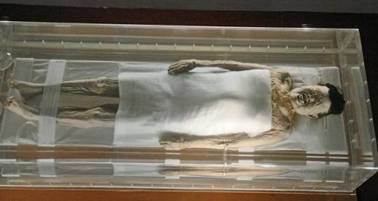
The wealth of the three tombs at this museum gives an eerily complete view of an aristocrat, the minister of Chu, and his wife and son. Some 3,000 artifacts make an open book of the Western Han Dynasty (206-24 BCE). Both the exquisite and the mundane were interred with the bodies, evidence of the rich and complex lives spent at the dawn of the first true Chinese empire.
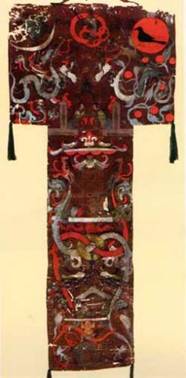
The minister and his family had lutes, stringed instruments and flutes to make merry with, copies of Laozi's work and Spring & Autumn poetry to read, maps of uncanny accuracy, and silk clothing thin and delicate as dragonfly wings. The forty eight bamboo cases of ceremonial food items reveal a diet as rich and varied as any today, including a wide range of herbal medicines. While most of their contemporaries may not have been so fortunate, the family's relics prove that in China, the good life has always been available to those who could afford it.
Address: Changsha City, #3 Dongfeng Road
Zigong Dinosaur Museum, Zigong, Sichuan
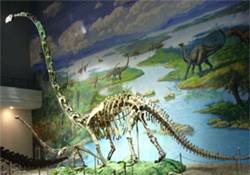
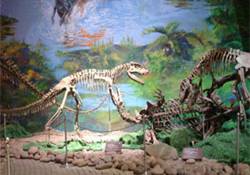
So you can't look at another bronze pot or ceramic figurine without screaming. Time to see some denizens of China who predate its otherwise ancient culture by some 160 million years. Most of the thunder lizards on exhibit at the Zigong Dinosaur Museum come from the early and middle Jurassic period, a time relatively under-represented in paleontology, which makes the Zigong collection especially valuable.
More than one hundred dinosaurs have been excavated at the Zigong site, which has been incorporated into the museum grounds. Visitors can see bones where their owners originally lay down to die, in underground chambers of rock shot through with ore. A far cry from pottery and carvings indeed. See more here.
Quanzhou Taiwan Friendship Museum, Quanzhou, Fujian
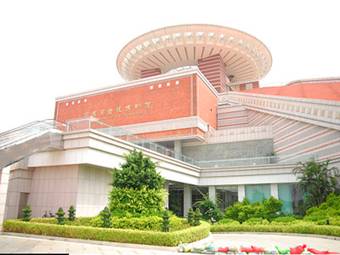
Right across the strait from Taiwan lies a museum with a decidedly impressive design, and a decidedly predictable slant on China-Taiwan relations. Surely these displays aren't the only media from which Chinese schoolchildren learn that "Fujian migrants turned Taiwan from a wasteland into a rich and popular island," and that "Taiwan has been part of China's territory from everlasting." Hopefully, though, no textbooks repeat one of the display's assertion about the Japanese: "A handful of scum of a nation who betrayed their ancestors and country".
The propaganda should be a kick for foreigners of all age and stripe, but there is quite a bit of art besides. Much is devoted to Mazu, the goddess of the southeast Asian seas beloved by so many and known by so few outside. The intricate Minnan mosaics are another brief distraction from hunting up more examples of subjective political opinion thinly disguised as cultural edification.
Shaanxi History Museum, Xi'an
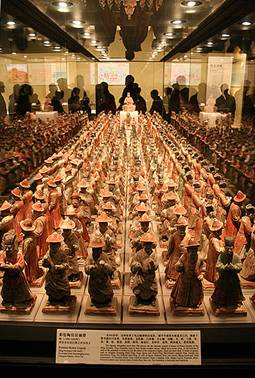
Not to rain on your Xi'an warrior parade, but the "hall" of Qin splendor is little more than a dark, dank cavern, and once you realize all those figures look pretty much the same, you're thinking less about China's historic splendor and more about those little red sausages you saw the vendor peddling.
On the bright side, you have the Shaanxi History Museum back in town. Xi'an was the capital for more than a few dynasties, most significantly the incomparable Tang. The museum houses a truly massive collection showcasing the best of each, close to 400,000 artifacts in all.
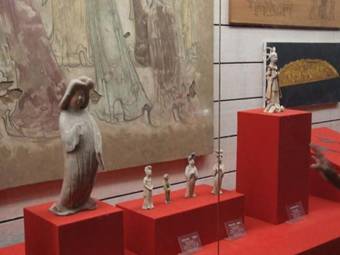
From Neolithic ceramics, to Zhou bronze swords, on to thirty nine exquisite Tang murals, the museum has so much more to offer than thousands of scowling terra-cotta mugs. The place is as comprehensive as the mind of Zhou Enlai, whose last wish it was to have the museum built.
( From China Expat )
Warning:The use of any news and articles published on eChinacities.com without written permission from eChinacities.com constitutes copyright infringement, and legal action can be taken.
All comments are subject to moderation by eChinacities.com staff. Because we wish to encourage healthy and productive dialogue we ask that all comments remain polite, free of profanity or name calling, and relevant to the original post and subsequent discussion. Comments will not be deleted because of the viewpoints they express, only if the mode of expression itself is inappropriate.
Please login to add a comment. Click here to login immediately.